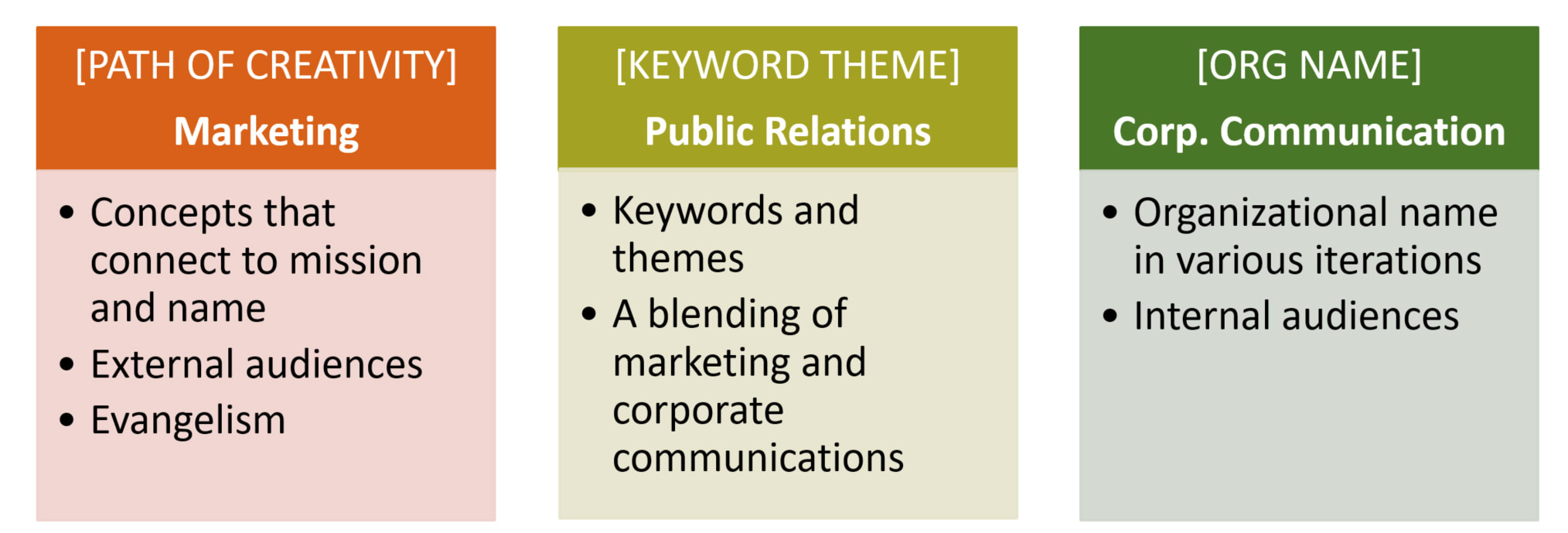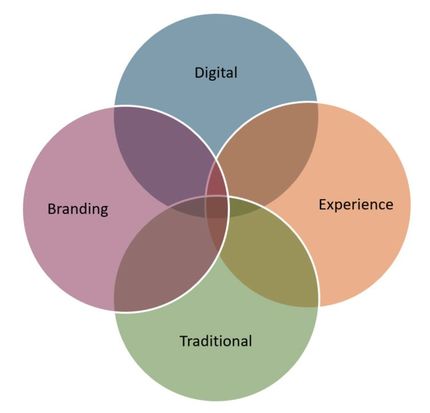Akande DavisDigital Strategy Specialist and founder of Digital Pew. One of the biggest appeals of livestreaming is all about capturing the ‘now.’ Church marketers (Digital Evangelists) can leverage their audience in a completely new way that is real, relevant, and in the moment. The level of exchange and interaction that Digital Evangelists can get from livestreams, gives creators unique moments in time with their audience. There is something awesome about that. With all of the benefits of livestreaming being used in church communication, there is one that often goes unnoticed and that is the value of creating livestream content that is ‘Evergreen.’ Evergreen content is great for promoting your message, church, or ministry to your audienceEvergreen content is content that can be shown to new audiences over and over while retaining its intrinsic value. It doesn’t become less interesting or less relevant, in fact, it has the same effect for every new person that watches it. Some great examples of Evergreen content pulled from livestreams are often conference videos, Q&A sessions, and even live group discussions. Even if it is happening in the now, it can still be Evergreen. While preparing for your next livestream to help aid your church or ministry efforts, here are 4 ways that you can do to make sure that your content is as Evergreen as possible:
Creating Evergreen content is practical and essential.But take everything with a grain of salt; not all livestreams can be repurposed to be Evergreen. Sometimes the ‘now’ of the livestream is what it is – there is nothing wrong with having a strategy that isn’t Evergreen or having content that isn’t constantly repurposed at every opportunity for your digital campaigns. Your church/ministry is unique - don't drown it out by trying to conform your communications strategy to what is considered 'better,' if what you're doing is working well. However, it never hurts to try new things. Test and see what works for your ministry, and keep trying. Don't know if your livestream can be used as Evergreen content?If you're wondering if something can be turned into Evergreen content, consider some of these leading questions;
Reposted with permission from DigitalPew. Related Resources:Akande DavisDigital Strategy Specialist and founder of Digital Pew. Livestreaming is a powerful tool that can be used to build up your digital strategy. But that is just what it is, a part of the strategy. Livestreaming should not be your whole digital strategy. Even if you follow every rule and best practice, your marketing efforts will fall short if you don’t have a solid foundation to build your livestreaming, and other social media efforts, on top of. More times than not, the basics of digital strategy are entirely missing, so when one strategy doesn't make up for what's missing, it's abandoned. Without the basics, you will fall short of your goals and not even know why. Here are some considerations to help you maximize your video content and pair your efforts together in a way that has a positive impact all around:
Download the following resources to help you establish a digital strategy for your church or ministry.
Using livestreaming as a digital tool can be incredibly valuable to crank your digital efforts to the next level, magnify your influence, and engage even more effectively with your followers.Many organizations see a much better engagement on video content than other types of content on social media. Below is one example where Facebook reach was 328% MORE on video content. Facebook engagement was 288% MORE. The page itself has a total following of about 17k on Facebook and 4k on Instagram. Notice the spike in reach that can be seen in November (below) when more engaging (video) content was used to reach their audience - it looks like a mountain range with an almost immediate spike! Next is another example of a page I manage that has roughly 300k across Facebook and Instagram. Again, we see that video content gets over 300% more engagement and over 250% more reach - than ALL of the other options combined! Leveraging video content isn't just beneficial, it's a must if you're looking to take your digital strategy to the next level. Livestream video content can be used over and over again when turned into Evergreen content - videos don't have to age out just because they were livestreamed. There are opportunities to maximize what you are using and are already doing with your livestream content. Check out our blog on creating Evergreen content to learn more. Simply put, don't wait! Start using livestream to maximize your digital strategy efforts today. Comment below with your experiences or use #DigitalEvangelism. Reposted with permission from DigitalPew. Related Resources:Dustin CommDirector of Media & Marketing for Good To Go Media. Facebook’s latest announcement that its algorithm will favor posts from friends and family instead of Pages means your church or organization’s Facebook page posts aren’t going to show up in your fans’ news feeds very much anymore. “I’m changing the goal I give our product teams from focusing on helping you find relevant content to helping you have more meaningful social interactions,” said Facebook founder Mark Zuckerberg. “As we roll this out, you’ll see less public content like posts from businesses, brands, and media.” While this seems like a benevolent move by Facebook (and it certainly may improve the quality of life for users personally), the plan has always been to reduce the organic reach of Pages’ posts to zero. The term “Facebook Zero” has already been in use for the few couple years as Facebook has been fairly transparent about that trajectory. Here are some articles if you’d like to read more about this progression: https://social.ogilvy.com/facebook-zero-considering-life-after-the-demise-of-organic-reach/ https://www.peepso.com/facebook-zero-the-decline-of-organic-reach/ https://www.hospitalitynet.org/opinion/4075682.html https://wallaroomedia.com/facebook-newsfeed-algorithm-change-history/ So what can you do to overcome these changes? Here are some tips in combating the new Facebook.1. Create “Delightful” Content
Your content should be “thumb-stopping,” meaning users should pause scrolling in their news feed because the it is “delightful.” According to Facebook, this means it should either “make someone laugh, cry, or surprise/provoke them.” Statistically, faces hold our attention longest, but funny memes/quotes, or stunning video footage accomplish this as well. 2. Make It Shareable The shorter the video, the more likely it is someone will watch until the end and share it. Infographics also are easy to share, so find good stats and create an image using a service like Canva. Stay away from articles as they require someone to click and read something, which means many people won’t take the time to do so. 3. Create Dialogue Zuckerberg gives us a hint for why this is so important, “The public content you see more will be held to the same standard – it should encourage meaningful interactions between people.” This means if your post is receiving a lot of comments and discussion, Facebook’s algorithm will rank your Page’s post higher and it will show up in more News Feeds. 4. Use Facebook Ads It’s amazing how far your content can go on just $50. Give your posts some paid momentum that can build into organic performance. 5. Consider Other Platforms Facebook is king as far as numbers: at the time of this article there are over 2 Billion active monthly users on the platform. But if all those people aren’t seeing your content, maybe you consider supplementing your marketing strategy with other platforms like Instagram or Twitter. Above all, the biggest piece of advice I can give you is don’t get discouraged, and continue experimenting with what works for your organization. Things will always change in the digital evangelism space as technology and platforms ebb and flow. Remembering how powerful these resources can be for our mission is paramount. Rachel Lemons AitkenCommunications Executive of the Greater Sydney Conference and Founder of the Digital Discipleship Ministry of the Greater Sydney Conference. As a local church member, pastor, elder or youth leader, you may be wondering how relevant Digital Discipleship is to your church. The Digital Discipleship ministry exists to create, inspire, encourage and resource disciples of Jesus Christ to share His love through their creativity and innovation in the digital space. What does this look like in action? After reading this article, you will be equipped with actionable ideas for integrating Digital Discipleship principles into the fabric of your church. A church’s strength – its unique quality – is in its community and its ability to be a place of life-changing teaching, learning and launching. In the Bible, we see the church doing every day, ordinary things together – eating, sharing problems and burdens, sharing dreams and discouragements and sharing financial obligations. Community was natural – almost inevitable. When the biblical model of church is so reliant on in-person interaction, what does Digital Discipleship have to offer? In many ways, this question lies at the heart of the discussion of the relevance and efficacy of Digital Discipleship at the local church level. In the minds of some, community must happen exclusively in person while in the minds of others, community happens online. However, Digital Discipleship offers a “both, and” approach instead of an “either, or” approach. The local church can now add digital tools to its available resources to reach, disciple and provide community. The local church has the opportunity to recognize the gifts of its members in the areas of creativity and technology and to acknowledge the abilities of these people to move the work of the church forward. The local church is positioned to amplify its message while becoming more targeted in its approach through available technology. Local church leaders and members can implement any of these principles as they work to integrate Digital Discipleship into their church’s ministry plans keeping in mind that this ministry encourages churches to equip its members to make disciples and grow in discipleship by meeting a need in the digital space, addressing a digital need or utilizing digital tools. HOW TO IMPLEMENT DIGITAL DISCIPLESHIP AT YOUR CHURCH:
If your interest has been piqued and you’re curious about introducing Digital Discipleship principles in your local church, consider the following steps:
Please let us know if you are implementing digital discipleship models in your church or ministry. We would love for you to share you experience and what you've learned. Comment below! Click here to read the full, original article. Re-posted with permission from digitaldisciples.info. Related Articles:Jamie Schneider DommDigital Strategist for the North American Division. The stakes of our gospel calling are too high; your church, conference, or ministry can no longer go without a digital brand strategy. It is imperative that we become just as effective as secular organizations at using digital media for communication and community building. Strategic planning is simply the process of being intentional and thoughtful with your digital communications. This process begins with one question: How do you want to be known? This is your brand. Branding is the process of revealing the most complete picture of an organization to its audience through perception, experience, and essence. Brands are communicated, not just created. A brand is based entirely on a customer’s experience. (Heidi Baumgartner) Components of your brand strategy should cover three areas: marketing, public relations, and corporate communication. Think of marketing as evangelism [OUTREACH] and corporate communications as internal or member focused [INREACH]. What can your church or ministry become known and recognized for? What is unique about what your organization has to offer the community? Your branding should:
Your brand strategy and digital strategy work together, and are part of an overarching grand communications strategy that includes traditional means of outreach and experience. Redeveloping your brand and/or your strategy takes a lot of behind-the-scenes homework. Involve people in your team throughout the process so they could share in ownership. This is especially important for choosing a handle or name for your social media profiles. Brand Basics: Brand: represented by its logo, its color, its type, its images, its designs, its tone of voice, its customer service Brand Strategy: defines the message and how to say it Brand guidelines: a system of managing the brand visually The biggest problem I see with ministries using social media is that they have no clear objectives. You must determine your purpose and shape your online communications and brand accordingly. Conduct a thorough branding audit. This process helps you to evaluate your communication and can help direct your rebranding. Define your communication purpose(s): for example, to advance the gospel and influence your community. Achieving your ultimate purpose(s) will take time. Develop an on-going approach |
Archives
August 2020
Categories
All
|
||||||||||||||
- Home
- BLOG
-
RESOURCES
-
RESOURCE MENU
>
- ADVENTIST IDENTITY GUIDELINES
- BIG DATA RESOURCES
- BRANDING, IMAGE & DESIGN RESOURCES
- CHURCH/MINISTRY SPECIFIC RESOURCES
- COPYRIGHT & TRADEMARK BASICS
- COURSES
- EMAIL RESOURCES
- GUIDANCE FOR HIRING SOCIAL MEDIA POSITIONS
- PODCASTS
- REPORTS & CASE STUDIES
- SOCIAL MEDIA RESOURCES
- (SOCIAL) VIDEO RESOURCES >
- TEXTING 4 CHURCHES
- TRACKING & ANALTYICS
- WATCH VIDEOS & TUTORIALS
- WEBSITE TIPS
- SOCIAL MEDIA GUIDELINES
-
RESOURCE MENU
>
- SEO
- Digital Discipleship & Evangelism
- COVID-19 RESOURCES
- eNEWSLETTER


















 RSS Feed
RSS Feed